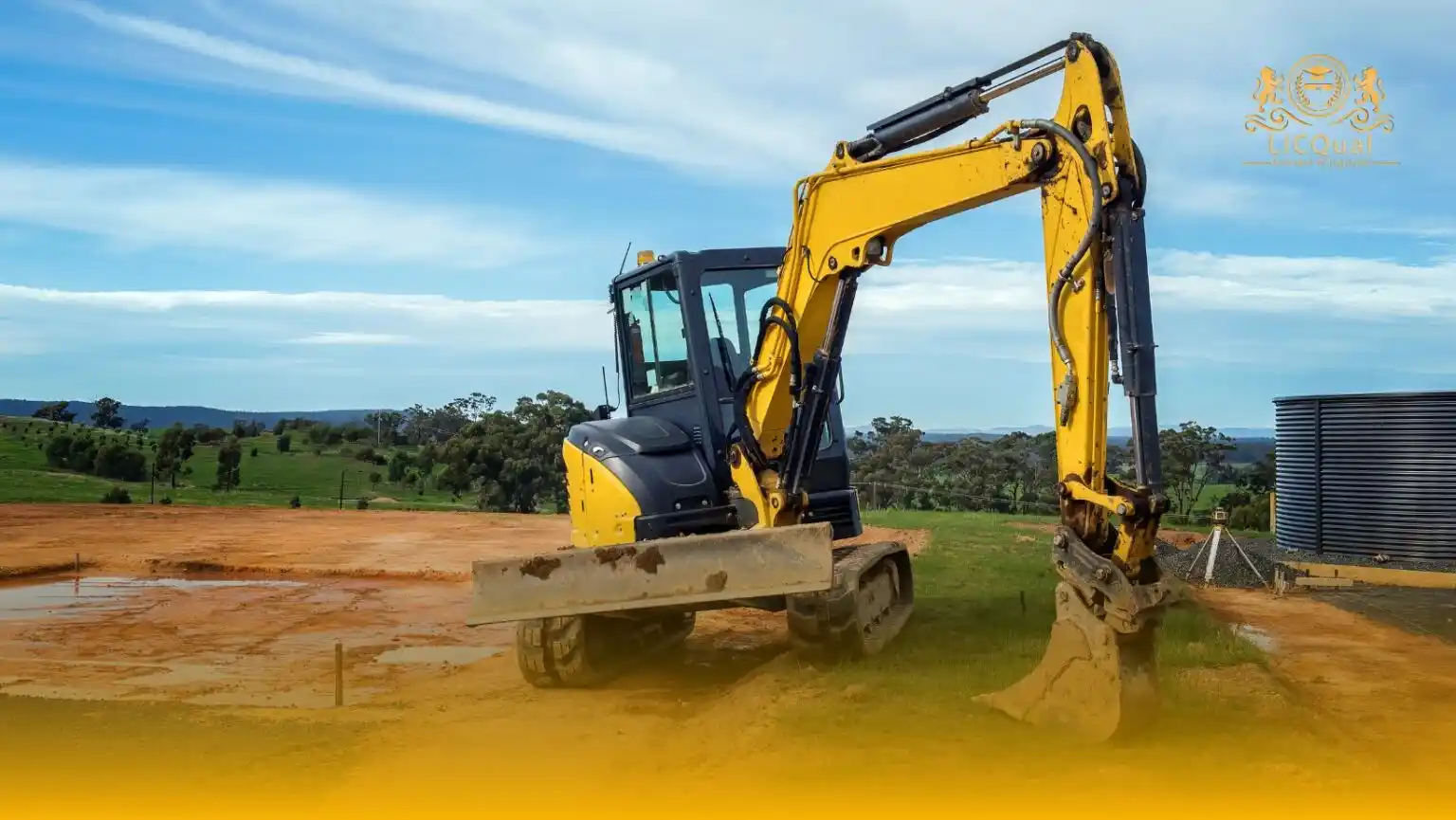The Safe Use of Earth Moving Equipment Instructor Training course is a specialized and advanced qualification tailored for professionals seeking to become certified instructors in the safe operation of earth moving equipment. With global infrastructure and construction demands rising, the need for qualified, knowledgeable, and safety-focused instructors is more critical than ever. Safe Use of Earth Moving Equipment Instructor Training course empowers participants with both the technical know-how and the instructional skills to train others effectively in accordance with international safety regulations and operational standards.
Earth moving equipment such as excavators, bulldozers, backhoes, and loaders play a pivotal role in construction, mining, and civil engineering projects. However, the improper use of this heavy machinery can lead to serious accidents, costly damage, and compliance violations. This instructor training course addresses these risks by equipping future trainers with the skills to teach operators how to work safely, efficiently, and responsibly. The course blends theoretical knowledge with practical teaching techniques, ensuring a strong foundation for delivering effective training sessions.
Participants will learn about the design, function, and safe operation of various types of earth moving machinery. They will explore essential topics including load dynamics, terrain assessment, machine stability, and pre-operational inspections. The course also delves into hazard identification, accident prevention strategies, and the correct use of personal protective equipment (PPE). These components are crucial for trainers who are expected to uphold and communicate the highest safety standards in potentially hazardous work environments.
In addition to operational safety, this course provides comprehensive instruction on how to teach others effectively. Participants will develop skills in lesson planning, adult learning techniques, communication strategies, and training assessment. This dual-focus approach ensures that learners are not only subject-matter experts but also confident educators who can transfer their knowledge to trainees in a clear, engaging, and impactful manner.
Designed for experienced operators, supervisors, safety officers, and training managers, this course prepares candidates to conduct structured training programs, evaluate performance, and support continuous improvement in equipment handling. It also supports companies in complying with international safety frameworks, reducing workplace incidents, and promoting a culture of competence and accountability.
By the end of the program, successful candidates will be able to deliver training for a variety of earth moving machines while meeting both legal and organizational safety obligations. They will receive a recognized certification that validates their ability to train operators in alignment with occupational health and safety standards. This qualification not only enhances individual career growth but also improves safety outcomes across entire organizations and job sites.
Whether you’re upgrading your role in health and safety training, expanding your professional qualifications, or striving to improve equipment operation standards at your organization, the Safe Use of Earth Moving Equipment Instructor Training course is a powerful step forward. It’s a globally respected credential that prepares you to lead, educate, and elevate operational safety wherever earth moving equipment is used.
Course Overview
Qualification Title
Safe Use of Earth Moving Equipment Instructor Training
Total Units
6
Total Credits
24
GLH
120
Qualification #
LICQ2200237
Qualification Specification
To enrol in the Safe Use of Earth Moving Equipment Instructor Training course, candidates must meet the following entry requirements:
- Experience in Operating Earth Moving Equipment: Applicants should have a minimum of two years of practical experience in operating earth-moving equipment.
- Basic Knowledge of Health and Safety Standards: A fundamental understanding of health and safety practices in the workplace is required.
- Physical Fitness: Given the nature of the work involved, candidates should be in good physical condition to meet the demands of both the practical and theoretical components of the course.
- English Language Proficiency: Applicants must have a good command of the English language, both written and spoken, to ensure they can effectively engage with the course materials, communicate with learners, and meet the assessment criteria.
- Age Requirement: Candidates must be at least 18 years of age at the time of enrolment.
|
Qualification# |
Unit Title |
Credits |
GLH |
|---|---|---|---|
|
LICQ2200237-1 |
Introduction to Earth Moving Equipment Operations |
4 |
20 |
|
LICQ2200237-2 |
Safety Protocols and Risk Management in Equipment Operation |
4 |
20 |
|
LICQ2200237-3 |
Regulatory Compliance and Industry Standards for Equipment Operation |
4 |
20 |
|
LICQ2200237-4 |
Instructor Skills and Training Techniques |
4 |
20 |
|
LICQ2200237-5 |
Practical Operation and Assessment of Earth Moving Equipment |
4 |
20 |
|
LICQ2200237-6 |
Emergency Response and First Aid for Equipment Operators |
4 |
20 |
By the end of this course, learners will be able to:
1. Introduction to Earth Moving Equipment Operations
- Understand the different types and functions of earth-moving equipment.
- Demonstrate basic operational techniques and safety measures for various machinery.
2. Safety Protocols and Risk Management in Equipment Operation
- Identify potential hazards and implement risk management strategies.
- Apply safety protocols to prevent accidents during machinery operation.
3. Regulatory Compliance and Industry Standards for Equipment Operation
- Understand relevant legislation and industry standards for safe equipment operation.
- Ensure compliance with regulatory requirements in machinery handling.
4. Instructor Skills and Training Techniques
- Develop effective communication and instructional techniques for teaching machinery operation.
- Design and deliver comprehensive training sessions for operators.
5. Practical Operation and Assessment of Earth Moving Equipment
- Demonstrate competency in the safe operation of various earth-moving equipment.
- Conduct practical assessments and evaluate operator performance.
6. Emergency Response and First Aid for Equipment Operators
- Understand emergency response procedures in case of accidents involving earth-moving equipment.
- Provide basic first aid to injured personnel on-site.
This diploma is ideal for:
- Experienced Earth Moving Equipment Operators – Those with practical experience in operating earth-moving machinery who wish to transition into an instructor or trainer role.
- Safety Officers and Supervisors – Professionals responsible for ensuring workplace safety on construction, mining, and other industrial sites, who want to enhance their skills in machinery safety training.
- Training Managers and Coordinators – Individuals in charge of overseeing safety and training programs within organisations, who aim to develop and deliver effective equipment operation training.
- Health and Safety Trainers – Those currently working in the field of occupational health and safety who wish to expand their expertise to include machinery operation and safe handling techniques.
- Construction and Engineering Professionals – People working in construction, civil engineering, and related industries who are responsible for ensuring compliance with safety regulations and effective training programmes.
Assessment and Verification
All units within this qualification are subject to internal assessment by the approved centre and external verification by LICQual. The qualification follows a criterion-referenced assessment approach, ensuring that learners meet all specified learning outcomes.
To achieve a ‘Pass’ in any unit, learners must provide valid, sufficient, and authentic evidence demonstrating their attainment of all learning outcomes and compliance with the prescribed assessment criteria. The Assessor is responsible for evaluating the evidence and determining whether the learner has successfully met the required standards.
Assessors must maintain a clear and comprehensive audit trail, documenting the basis for their assessment decisions to ensure transparency, consistency, and compliance with quality assurance requirements.







